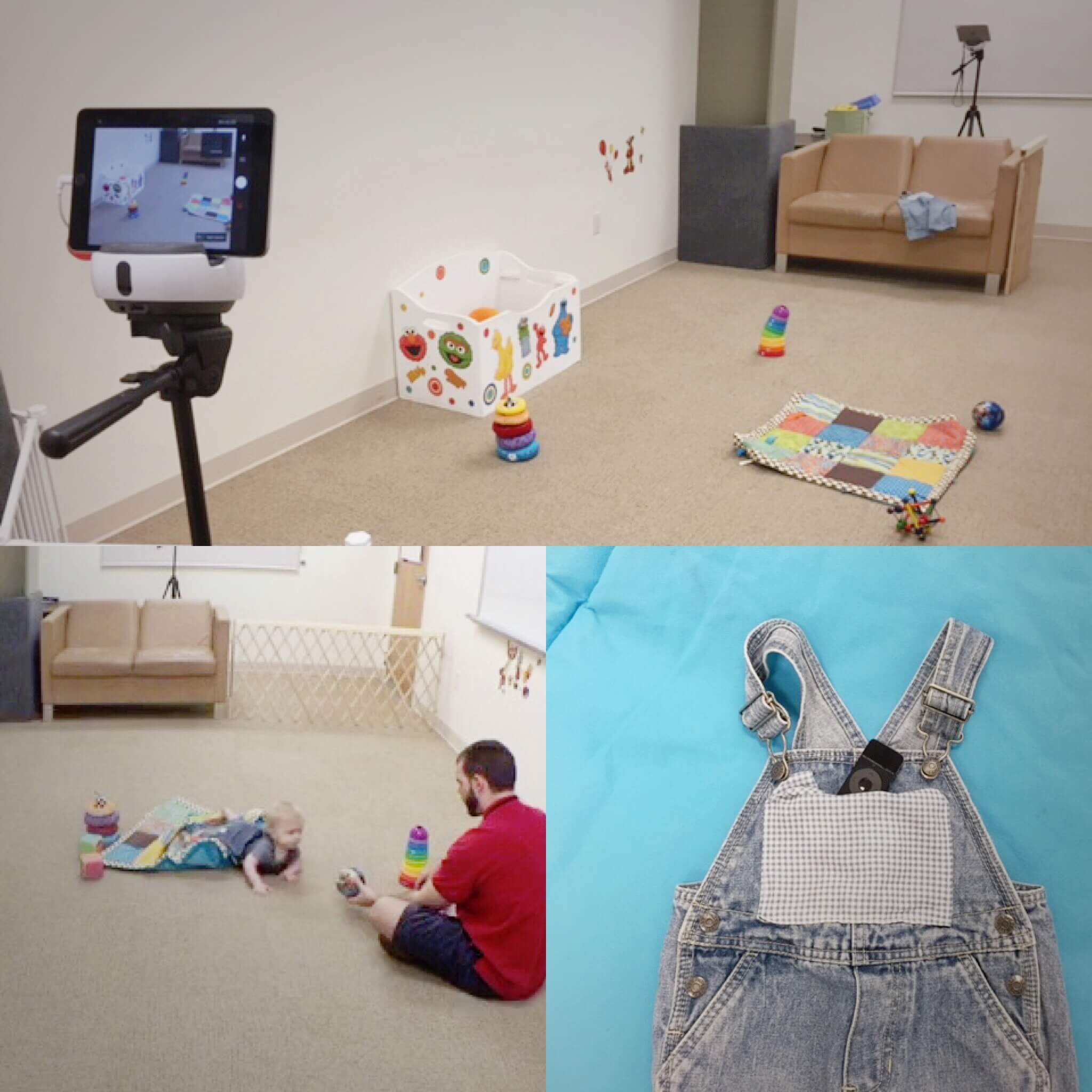
As a developmental scientist, my challenge is filming parent-infant interaction in naturalistic settings to understand how infants learn language. Capturing high quality speech recordings from infants while unobtrusively video-recording their behaviors used to require a permanent laboratory set-up with expensive equipment. But with Swivl, I now have a budget-friendly, yet high-quality recording system that also provides flexibility in recording location.
In my studies, we observe parents and infants while they play with toys to investigate how infant babbling attracts parents’ attention. We need to capture what infants say and how parents then respond. A challenge in collecting recordings like this is avoiding participant reactivity. We want both parents and infants to behave as naturally as possible. This means avoiding the baby being upset that a stranger is in the room and parents forgetting they are being filmed so they can be their normal selves. Prior to Swivl, collecting these observations meant placing an unfamiliar researcher with a camera into close proximity with the infants. Alternatively, we could utilize a much more expensive and permanent system of wall-mounted cameras in a laboratory while using a remote to control them from another room.
Swivl solves the participant reactivity problem for me while also adding flexibility to where I can record interactions. By placing Swivl robots on tri-pods and the microphone/tracker on my participants, the researcher can leave the room and let participants play on their own. The motor is quiet enough that parents quickly forget they are being filmed. The robot then keeps track of the participants, even as the babies rapidly crawl about the room. We use the multi-camera feature to allow one Swivl to track the infant’s movement while the other keeps the parent on camera. Both the parent and infant wear a marker, providing separate audio recordings of their speech. The marker is small enough to fit inside the front pocket of the overalls we slip on over the baby’s clothes and light enough that it does not impact their movement. Most importantly for my research, the acoustic quality of the recordings is excellent. We analyze each infant vocalization and then classify parent’s responses to those vocalizations to determine how certain characteristics in infant speech influence what parents say. The technology also is easy to use, making it easy and fast to teach research assistants how to collect data. We then use the cloud service to ensure the recording are immediately backed up so no data is lost in transport.
With Swivl, the door is now opened to easily collect data from harder to reach populations. Researchers can leave the lab and get out into the community by meeting participants where they live. We can observe our participants in the most natural of circumstances and environments. In my case, this means investigating how infants learn language in busier environments such as day-care classrooms. For other researchers, home visits, classroom observations or even investigating peer dynamics on a playground become may be much easier to conduct.
.
Rachel Albert, P.h. D. is an Assistant Professor of Psychology at Lebanon Valley College. She uses Swivl to capture better data during child development. You can learn more about her work here.
Save
Save